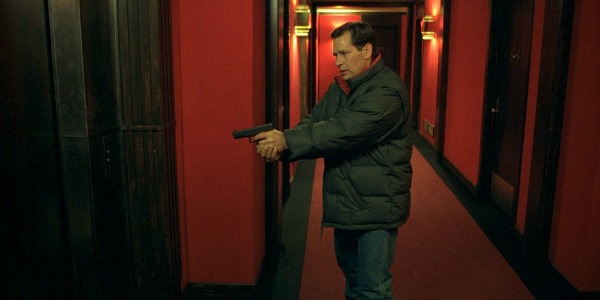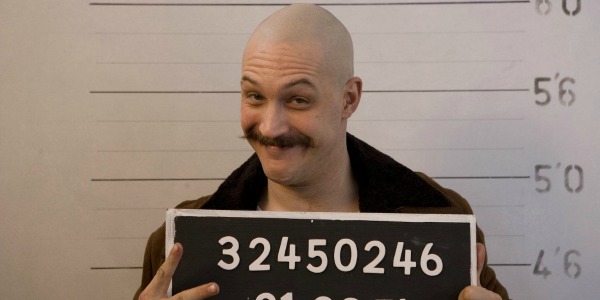The Beginner’s Guide: Nicolas Winding Refn, Director

Alistair is a 25 year old writer based in Cambridge.…
One of the most controversial directors currently working today, Nicolas Winding Refn is a provocative force to be reckoned with. He has an utterly distinctive voice that couldn’t ever be mistaken for anybody else. Each of his films is widely divisive, almost always opening to heated opinion from audiences.
His latest film, The Neon Demon, premiered at Cannes to a chorus of boos, including multiple reports of critics heckling the screen throughout, with UK newspaper The Daily Mail even asking for the BBFC to ban the film prior to its planned July release. For any other filmmaker, this would be an alarming vitriolic reaction. For Refn, it’s business as usual, and we wouldn’t have it any other way.
Pusher (1996)

Refn’s debut was widely considered to be the first Danish language gangster movie. The narrative itself is pretty formulaic genre material: Frank (Kim Bodnia) is a low level drug dealer whose lucrative deal with his sidekick Tonny (Mads Mikkelsen) ends up being intercepted by police and leads him to dump multiple grams of heroin into a Copenhagen river. After being released from police custody, his friends have turned against him and he only has a few days to make the money back.
What sets Pusher apart from other genre efforts is its style. Adapted from a five minute short Refn made as a film school application, he decided to use his time to make a feature instead of taking the place. Utilising a low budget, it doesn’t have the same hyper-stylisation his most recent works have made him known for, but it helps to create a documentary-style realism when approaching a subject that had previously been done to death. Scenes of hyper violence (Refn’s calling card) are punctuated by sequences of characters have banal conversations that help underline how repulsive they truly are. In his later films, such as Only God Forgives, Refn would paint his characters as scum through action alone. Watched now, it is amazing to see how in love with dialogue he once was.
The film was a runaway success in Europe, launching the career of Refn and his cast of unknowns. He would later complete a trilogy due to financial problems, with Pusher even getting a UK remake in 2012, which fared poorly with audiences and critics upon release, not even cracking the box office top 10.
Bleeder (1999)

Reuniting with the cast of Pusher, but with Mikkelsen elevated to a leading role, it is hard not to see Bleeder as Refn’s most personal movie. Half of the film contains the nasty ultra violence he is so fond of, but the other half is an uncharacteristically understated character study of a socially awkward movie nerd (played by Mikkelsen) trying to connect with the woman who keeps visiting the video store where he works. Mikkelsen even based his entire performance on Refn, mimicking his socially awkward mannerisms, with many parallels between the character and director being noted; both quote The Texas Chainsaw Massacre as their favourite film, for example.
That this character is friends with hyper violent Nazi characters is unrealistic, even more distracting considering the adoption of Pusher’s documentary style, but it acts as an allegory for Refn’s career. A shy, sensitive film nerd who is obsessed with the brutality of violence. Many of the sequences in the film mirror that of French-Argentinian provocateur Gaspar Noe’s debut I Stand Alone, from the previous year, with a disorienting opening tracking shot similar to the one Noe would adopt a few years later for Irreversible. This comparison is important; when filming Drive, Refn would call Noe for advice on how to film a head being stomped on in the most practical manner.
Fear X (2003)

Fear X is complete anomaly in Refn’s filmography. Not in terms of style or subject matter, but the fact that it received a PG-13 rating, something you would assume his films were incapable of receiving. His English language debut, Fear X was his first embrace of the elliptical narrative that would later be deemed highly controversial in Only God Forgives. After his wife is killed in a random accident, Harry (John Turturro) starts having mysterious dreams and visions, that help him believe he can unlock a deeper meaning to the fatal incident.
Of course, the film isn’t that simple; an anti climactic ending divided audiences (Refn cheerfully responded by asking “But, what the f*ck IS an ending?”) and the film’s subsequent box office failure forced Refn’s production company Jang Go Star into bankruptcy. His decisions to write and direct Pusher sequels were born of this failure, whilst a documentary, 2006’s Gambler, chronicled Refn and his wife Liv Corfixen’s attempts to fight financial failure.
As it stands, Fear X is the most difficult Refn film to track down. If you live in Italy, you can purchase it on Blu-Ray, but internationally, it is long out of print. Despite being a long forgotten work by a major director, Film Inquiry still managed to effortlessly find a second hand copy for less than £1, so “collector’s item” status has not yet arrived. With The Neon Demon only weeks away, expect a critical reevaluation of his most ambitious film to occur sometime soon.
Pusher 2: With Blood on my Hands (2004); Pusher 3: I’m the Angel of Death (2005)

Not a direct sequel so much as a spiritual one, Pusher II puts its entire focus on a supporting character the first one forgot about midway through, in the process making one of the most harrowing crime films of the new millennium. Again, it is strange to see Refn’s earlier directorial efforts and how they preferred substance to style, but Pusher II contains the same thematic elements the director would return to again.
If anything, this is a companion piece to Only God Forgives; both are about parents who see their sons as failures despite the fact everybody who inhabits their social circle is carelessly wallowing in a moral-free cesspit. Most importantly, both are about the act of redemption and the choice of whether or not to perform an act of vengeance for the person who brought you into this world, regardless of how they grew to feel about you. Weirdly, both also deal with the theme of impotence and how it fuels male aggression; it is telling that early scenes in both deal with main character’s suffering from erectile dysfunction in aggressively sexual moments.
In Pusher, Tonny (Mads Mikkelsen) is something of a comedic sidekick. Here, he is a tragic anti hero. He is comically useless at every crime scheme he is a part of, but possesses an endearing empathy despite his blatant unlikability. This is likely due to the cycle of addiction shown. No gangster movie shies away from the mountains of cocaine, but it has never felt as depressing as it does here. Mads Mikkelsen‘s terrific performance leaves you in no doubt we are watching a man’s disintegration before our very eyes, one line at a time.
The most alarming thing about both sequels is that Refn collaborated with real criminals in order to maximise the documentary aesthetic; Kurt Nielsen (who plays a sidekick character charmingly nicknamed “The Cunt”) was a real gangster Refn found at a Narcotics Anonymous meeting whilst prepping Pusher 3. The third in the trilogy centres on Serbian drug lord Milo (Zlatko Burić); a force to be reckoned with in the previous films, now humanised as a recovering addict who understands it is too late to back out from the criminal lifestyle.
The third entry is widely known to be Refn’s favourite, due to the formalistic abstraction he has increasingly come to favour over the course of previous movies. Pusher 3 closes the gap on his earlier gangster efforts and prepares the world for a more experimental form of genre filmmaking he would come to pioneer.
Bronson (2008)

After a brief excursion to direct an episode of quaint British period drama Miss Marple, he directed a biopic of Michael Gordon Peterson, best known under his self-inflicted pseudonym Charles Bronson, the most famous prisoner in 20th century British history. Serving over 30 years in solitary confinement, Peterson is one of the most dangerous criminals in the UK; Refn’s film adapts his life as a Clockwork Orange–style mash up of bizarre British seaside humour and stomach churning violence.
After Jason Statham walked out on the lead role, it was instead given to Tom Hardy in a star-making performance. Starting his recurring trend of unfathomable accents, Hardy plays Bronson as completely unhinged; bursting into song one minute, getting hyper violent the next, with even his stillest moments being defined by an uncomfortable physicality. Refn was unable to meet Bronson during prep for the production (though Hardy did meet with him several times over the course of the film’s making), which is why the film never acts as straight biopic, but it does add as a vital turning point in his career, as his only effort where style and excessive dialogue co-exist. The rage-fuelled prose that Hardy spouts throughout possibly contains more lines of dialogue than the entire screenplays of Valhalla Rising, Drive and Only God Forgives put together.
Despite being the most unique character in his filmography, there is one parallel between Bronson and Refn: both were expelled from school for throwing a table at a wall.
Valhalla Rising (2009)

An even bigger flop than Fear X, the success of the low budget Bronson ensured Refn didn’t write himself into bankruptcy again with his most arthouse film to date. After all, you would have to be insane to green light a $5.8 million viking movie, where the leading man (Mads Mikkelsen) didn’t speak a single line of dialogue and characters weren’t given names to boost realism.
That is before you get to the religious allegory of the narrative, the Kenneth Anger influence and uncompromising supernatural elements; this is undeniably Refn’s most arthouse effort. Although it is telling that it is nowhere near his most divisive, with critics being in rare unison to heap praise on the film.
Drive (2011)

Widely regarded as one of the best films of the decade, as well as a commercial success, Refn’s first Hollywood movie was a stylish tribute to the genre movies he grew up loving. His first of two collaborations with Ryan Gosling was almost never to be; Refn had multiple lucrative offers from US studios at the time (including a personal offer from Channing Tatum to direct Magic Mike) and his inaugural meeting with Gosling was defined by awkwardness.
Luckily, he accepted the adaptation of James Sallis’ novel without hesitation; in the process reshaping a $70 million project starring Hugh Jackman as a c*cky stuntman turned getaway driver to a $15 million indie where the lead is defined by having few lines of dialogue. Most impressively, it is a film about the thrill of driving, directed by a man who failed his test eight times.
It is typical Refn in terms of style: the bright primary colours that define the visuals (Refn is colour blind), to a thematic obsession with setting leading him to film entirely in LA and asking the entire cast to movie in with him for budgetary reasons. The synth pop soundtrack, one of the all time best, helped elevate the film into a cult classic within minutes of its opening credit sequence. Everything about Drive helps it rank easily alongside this century’s best, with the simplicity of its narrative but strength in execution.
It is still the only film Refn has made to date that wasn’t shot in chronological order. It could be why this feels like his most traditional film so far and why it can be easily so beloved whilst his other efforts inspire heated vitriol.
Only God Forgives (2013)

Suddenly, Refn’s accidental success, with a film whose tribute to classic genre movies felt at odds with his polarising style, led him to become a highly in-demand director. He returned to passion project Only God Forgives, which was now given a cash windfall – and original star Luke Evans subsequently being replaced by the more bankable Gosling.
An abstract tale of vengeance in Bangkok inspired by the work of Alejandro Jodorowrsky, Gosling plays Julian, whose twisted mother (Kristin Scott Thomas) asks him to murder the people responsible for his brother’s death. The only problem is his brother was murdered for raping a 14 year old girl, and the man responsible for his death appears to be a mythical higher power, who can easily pull a samurai sword out of thin air and is a beast on karaoke.
Only God Forgives is thematically ugly, dealing with themes of male rage and impotence, Freudian familial relationships and vengeance against a beautiful neon-soaked Thai backdrop. When shooting the movie, Gosling’s ideas for the narrative were often rejected by the director for being too extreme, something remarkable to consider when you see the finished product.
Loudly booed upon its Cannes premiere, the movie divided critics and inspired walkouts worldwide when it finally made its cinematic bow. Even Refn himself has claimed to not understand the finished product (something documented in his wife’s documentary My Life Directed by Nicolas Winding Refn), with many of the cast also feeling conflicted about starring. Kristin Scott Thomas hasn’t commented on the final film but did remark that she was alarmed at being “part of a nightmare”.
The Near Future: The Neon Demon (2016)
At the time of writing, Film Inquiry hasn’t seen his latest controversial effort. But with controversy already greeting its release, this darkly satirical look at the LA fashion underworld is certainly one to watch. Designed as a counterpoint to the feminist critiques of his earlier work, the screenplay was developed by Mary Laws and Polly Stenham with the director after he became increasingly upset at being labelled a misogynist. The finished product is likely going to produce the most conflicted feminist think pieces since Gone Girl.
This is just covering Refn’s filmography, as he has been behind the camera elsewhere. Did you know that he is responsible for the widely parodied Lincoln adverts starring Matthew McConaughey? Or that he originally planned to direct a Wonder Woman movie with Christina Hendricks? Even the choices he’s made outside his core body of work are nothing short of memorable, which is why the Danish auteur is one today’s leading filmmakers.
What is your favourite Refn film?
Does content like this matter to you?
Become a Member and support film journalism. Unlock access to all of Film Inquiry`s great articles. Join a community of like-minded readers who are passionate about cinema - get access to our private members Network, give back to independent filmmakers, and more.
Alistair is a 25 year old writer based in Cambridge. He has been writing about film since the start of 2014, and in addition to Film Inquiry, regularly contributes to Gay Essential and The Digital Fix, with additional bylines in Film Stories, the BFI and Vague Visages. Because of his work for Film Inquiry, he is a recognised member of GALECA, the Gay & Lesbian Entertainment Critics' Association.













